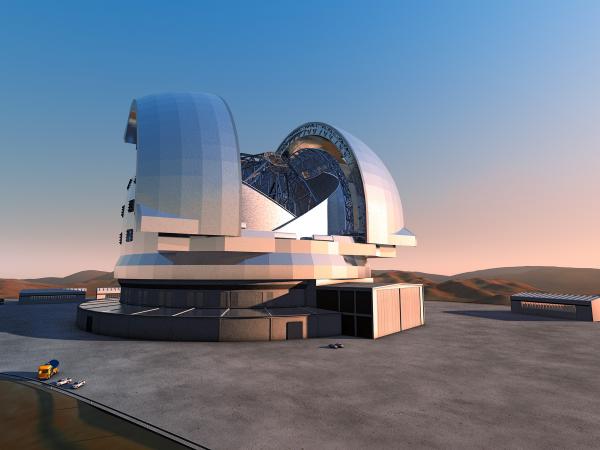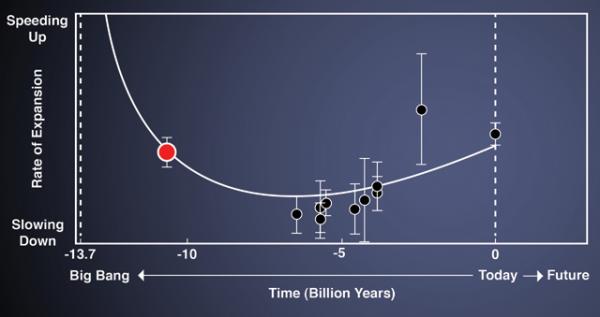The European Southern Observatory (ESO) Council at its meeting at ESO's Headquarters in Garching, Germany on 4 December 2012 has given full approval for the start of the European Extremely Large Telescope (E-ELT) programme. With its 39,3 m diametre mirror, E-ELT will be the world largest ground-based telescope for visible and infrared observations. Four to five times bigger that the present most-advanced instruments, it will collect 15 times more light. Its size is also larger than the other competing installations the « Thirty-Meter Telescope » and the « Giant Magellan Telescope ». The vote of France has allowed to reach the two-third majority needed for the launch of the program. Within a consortium of other European laboratories, the CEA (Astrophysical Division - IRFU) is involved in the buiding of METIS, a spectro-imager operating in the infrared that will be one of the major instruments at the focus of the new giant telescope.
Read more in : Le télescope européen géant E-ELT définitivement accepté (in French)
Astrophysicists from the SDSS-III (Sloan Digital Sky Survey) project, composed largely of French researchers, CEA Irfu, CNRS In2p3 and INSU, have made the first measurement of the rate of expansion of the young Universe, only three billion years old out of the 13.7 billion, when gravity was still slowing down its expansion, before its current phase of expansion accelerated by the Dark Energy. They used a new technique to map the distant Universe in three dimensions. This result is online at arXiv.org.
Different phases of the expansion of the Universe
Hubble and Lemaître highlighted the expansion of the Universe in the 1920s by making two types of measurements for the same set of galaxies: the distance between these galaxies and us, and the speed of these galaxies (using the Doppler effect on the lines of their spectra).
Their observations are at the origin of the current "standard" model of cosmology. For most of the history of the Universe, this expansion has continued to slow down under the effect of matter gravitation and radiation. But since five billion years ago, when the Universe was about 7 billion years old, this behavior has been reversed: the expansion started to accelerate, probably due to a mysterious repulsive force produced by what has been called: "dark energy". Experiments in cosmology have made it possible to observe this period of recent acceleration, but not the primitive deceleration of the Universe. To be able to measure this deceleration requires to go back to the first billions of years of its history, to go far back in time, therefore to observe far in space. For this, galaxies are no longer enough: at such great distances, their luminosity becomes too low.



